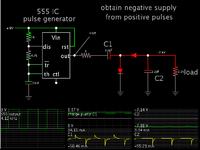PRABAKARDEVA
Full Member level 2
can anybody explain about the operation of the charge pump circuit?i know use of charge pump capacitors in max 232.but i couldn't understand the operation of the charge pump.....
the main purpose of charge pump capacitor is double the voltage and also inverting the voltage.......
how it is happening?
the main purpose of charge pump capacitor is double the voltage and also inverting the voltage.......
how it is happening?
